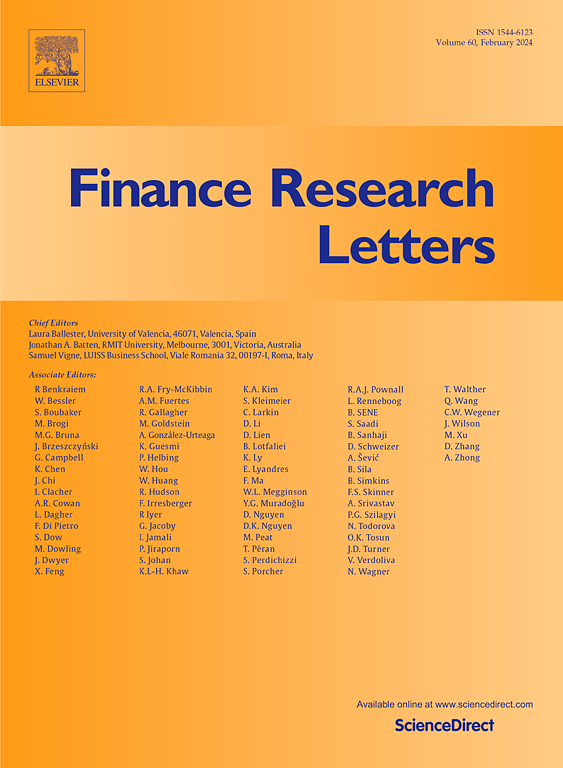国际净短期资本流动的风险传染:一个波动溢出网络的视角
IF 6.9
2区 经济学
Q1 BUSINESS, FINANCE
引用次数: 0
摘要
本文通过波动溢出网络的视角研究了35个主要经济体的净短期资本流动风险的动态连通性。我们的分析揭示了一个“核心-外围”网络结构,其中全球金融中心和出口大宗商品的新兴经济体始终是净短期资本流动波动的核心接受者。主要新兴经济体,尤其是中国、俄罗斯和巴西,在2008年金融危机之前和美联储(Fed)量化宽松期间,都是波动的主要传播者。随着美联储货币政策正常化,溢出优势转移到了全球金融中心。聚类分析表明,在2019冠状病毒病大流行及其恢复期,溢出效应更具区域性聚集性。美国、中国和日本等主要经济体将波动传导至全球金融中心,而亚太和拉美新兴市场则表现出加剧的区域内部溢出效应。本文章由计算机程序翻译,如有差异,请以英文原文为准。
Risk contagion of net international short-term capital flows: A volatility spillover network perspective
This paper investigates the dynamic connectedness of risk in net short-term capital flows across 35 major economies through a volatility spillover network perspective. Our analysis reveals a “core-periphery” network structure, where global financial centers and commodity-exporting emerging economies always serve as core receivers of net short-term capital flow volatility. Major emerging economies, notably China, Russia, and Brazil, acted as key transmitters of volatility both prior to the 2008 financial crisis and during the Federal Reserve's (Fed's) quantitative easing. As the Fed normalized monetary policy, spillover dominance transitioned to global financial hubs. Cluster analysis indicates that during the COVID-19 pandemic and its recovery period, spillovers became more regionally clustered. Major economies, such as the U.S., China, and Japan, transmitted volatility to global financial hubs, while Asia-Pacific and Latin American emerging markets demonstrated intensified internal regional spillover effects.
求助全文
通过发布文献求助,成功后即可免费获取论文全文。
去求助
来源期刊

Finance Research Letters
BUSINESS, FINANCE-
CiteScore
11.10
自引率
14.40%
发文量
863
期刊介绍:
Finance Research Letters welcomes submissions across all areas of finance, aiming for rapid publication of significant new findings. The journal particularly encourages papers that provide insight into the replicability of established results, examine the cross-national applicability of previous findings, challenge existing methodologies, or demonstrate methodological contingencies.
Papers are invited in the following areas:
Actuarial studies
Alternative investments
Asset Pricing
Bankruptcy and liquidation
Banks and other Depository Institutions
Behavioral and experimental finance
Bibliometric and Scientometric studies of finance
Capital budgeting and corporate investment
Capital markets and accounting
Capital structure and payout policy
Commodities
Contagion, crises and interdependence
Corporate governance
Credit and fixed income markets and instruments
Derivatives
Emerging markets
Energy Finance and Energy Markets
Financial Econometrics
Financial History
Financial intermediation and money markets
Financial markets and marketplaces
Financial Mathematics and Econophysics
Financial Regulation and Law
Forecasting
Frontier market studies
International Finance
Market efficiency, event studies
Mergers, acquisitions and the market for corporate control
Micro Finance Institutions
Microstructure
Non-bank Financial Institutions
Personal Finance
Portfolio choice and investing
Real estate finance and investing
Risk
SME, Family and Entrepreneurial Finance
 求助内容:
求助内容: 应助结果提醒方式:
应助结果提醒方式:


